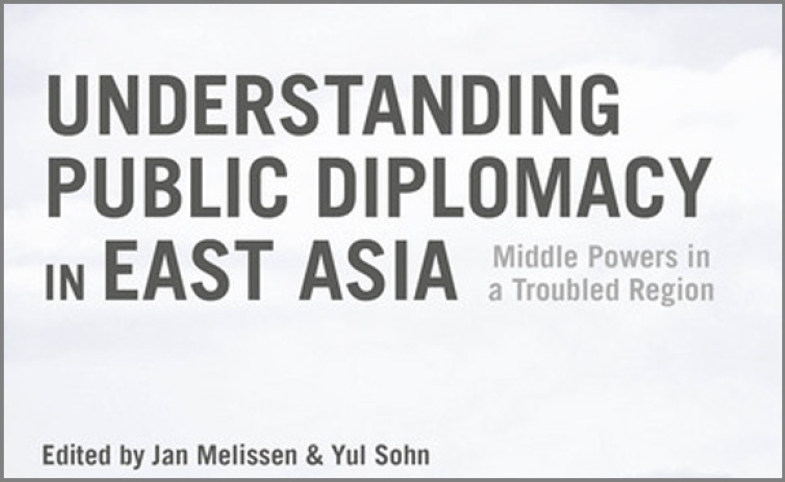Based in the Netherlands, Jan Melissen is an active member of the global diplomatic studies community. From his position as the Director of the Centre for the Study of Diplomacy at the University of Leicester (UK) to his...
KEEP READING
Meet the Author: Jan Melissen
Jan Melissen is a Senior Research Fellow at the Netherlands Institute of International Relations ‘Clingendael’ in The Hague and Professor of Diplomacy at the University of Antwerp (Belgium). After joining the Clingendael Institute in 2001, he held various management positions in research and training. Jan is also a Senior Research Fellow with the Charhar Institute, China´s leading non-governmental public diplomacy think tank. He has published four books on public diplomacy with Palgrave Macmillan, most recently Understanding Public Diplomacy in East Asia: Middle Powers in a Troubled Region (2015), co-edited by Yul Sohn. He is co-author of two influential Clingendael Reports: Futures for Diplomacy (2012) and Diplomacy in the Digital Age (2015), and is the founding co-editor of The Hague Journal of Diplomacy and editor of the Brill Diplomatic Studies series.
The title of your book, Understanding Public Diplomacy in East Asia: Middle Powers in a Troubled Region, suggests that there is a special need to look at public diplomacy and soft power in East Asia. Why is that the case?
One of the most important reasons for analyzing public diplomacy in East Asia is that we cannot simply extrapolate findings on public diplomacy policies from the United States or the West to the Asian context. The cultural context is of course completely different and historical experiences play an important role in Asian public diplomacy debates today. When discussing public diplomacy in Asia, it helps to bear in mind that we see a complex mix of on the one hand traditional state-to-state diplomacy with little tolerance for foreign interference in domestic affairs, and on the other hand fast-growing transnational contacts and relationships, not least in the digital sphere.
Why is Understanding Public Diplomacy in East Asia crucial reading for students of public diplomacy?
This book on public diplomacy in East Asia may help make the point to students in the U.S. and Europe that Asia is not just about China. It argues that we get a more sophisticated understanding of public diplomacy by abandoning a "great power" perspective, so as to get a better picture of complex regional dynamics and radically different views on international politics among neighbors. Understanding Public Diplomacy in East Asia is not marketed as a textbook, but students will find that it has typical textbook features. All country chapters start with a helpful section explaining the specific national context, the argumentative introduction is meant to stimulate critical thinking, and the volume concludes with an essay summing up key points from all chapters. The book has recommendations for further reading and a very detailed index, altogether making it a user-friendly research tool.
What surprised you in researching this book?
The chapters on the public diplomacy of Japan, South Korea, China, India, Indonesia and Australia show how much public diplomacy traditions differ and what are explanations for success, failure and lack of mutual understanding. Reading about public diplomacy in “other worlds” also reveals that debates at home may get pretty stale and, I am tempted to say, sometimes even pretty predictable. Two things surprised me most in researching this book. First of all, the discussions with the Asian contributors taught me, once again, how necessary it is to include the non-Western experience of international relations in our studies. In a world characterized by the "Rise of the Rest," it is just not good enough to stick with examples of public diplomacy by the usual suspects in the West. Secondly, in Asia one cannot fail to observe how the perspective of national governments on public diplomacy is tied up with grand strategy. The time frame is much longer than what we usually see in public diplomacy driven by short-termism.
This is your second volume on public diplomacy and East Asia. Why is this subject so compelling to you?
Research for the book has taught me how important it is to listen carefully to the ideas about global issues by new middle powers in East Asia. The rise of East Asia is not just a story about economic success, it is also a narrative of national re-creation and a spirit of innovation that makes this part of the world so dynamic and increasingly attractive for the new generation. Another more prosaic reason for doing a second book is that, in spite of the word order in the title, [Melissen's previous book] Public Diplomacy and Soft Power in East Asia (2011) is more of a book about soft power in East Asia, including theoretical reflection and the question of measuring soft power. The issues of measuring soft power and evaluating public diplomacy have taken on new dimensions at the opening of the digital age. This book illustrates that they have been in the front of the minds of policy-makers for some time.
Visit CPD's Online Library
Explore CPD's vast online database featuring the latest books, articles, speeches and information on international organizations dedicated to public diplomacy.
Popular Blogs
-
March 22
-
February 23
-
February 22
-
March 4
-
February 16











